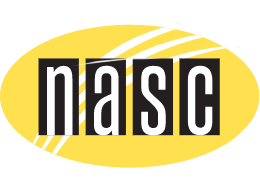Top 10 Essential Oils That Are Safe For Dogs

We humans love aromatherapy with essential oils. They can help with anxiety, infections, inflammation, and other health issues. You might even like using them as an air freshener. So, dogs should be able to benefit and like essential oils too, right?
They actually do! And they can tell you what oils will help them, as well. But you have to be very careful when you use essential oils for your dog. Essential oils have some great medicinal benefits. But, if used incorrectly, they can have disastrous results. There are many cases of serious problems like liver failure or other organ damage from incorrect use, overdose, or essential oil toxicity in dogs.
What Are Essential Oils?
Essential oils are concentrated oils extracted from plants, usually via steam or water distillation. Some are cold-pressed. They smell like very strong versions of the original plant. But essential oils aren’t just about perfuming your home. They have some useful medicinal benefits for your dog. But, if you use them incorrectly, they can have disastrous results.
Essential oils contain biologically active compounds. These are energetically very powerful for your dog. And just because they’re “natural,” don’t assume they’re automatically safe.
Essential Oils Are Potent
Essential oils are extremely strong. For example, to make just one ounce of peppermint essential oil, it takes 16 pounds of peppermint leaves. One drop is 75 times stronger than the herb itself.
Essential oils in plants help protect them from predators … because plants can’t run away. So you can see that even a very small amount of an essential oil could (literally) be repellent to a dog.
Essential Oils Can Affect The Whole Body
Your dog can absorb essential oils via inhalation, licking, or through his skin (but keep reading to find the safest way to give your dog essential oils). Then the oils travel through the bloodstream to different tissues in the body. The compounds in the oils have different effects on different body parts. So you need to understand the effects of each oil before you use it on your dog. If you’re using an oil for medicinal purposes, it’s best to ask a qualified animal aromatherapist or holistic veterinarian for advice.
Top 10 Safe Essential Oils For Dogs
Here are the top 10 essential oils that can help with different medical conditions for your dog, including digestive or respiratory issues or anxiety.
- Chamomile oil – calming and comforting
- Frankincense oil – helps with health and immunity
- Myrrh oil – helps with skin irritations and is a great cleanser
- Lavender oil – calming and relaxing insect repellent
- Ginger oil – settles stomachs and helps with breathing
- Peppermint oil – helps with allergies, soothes pain, relieves nausea digestive problems
- Cardamom oil – helps with appetite, heartburn and nausea
- Fennel – balances thyroid, pituitary and pineal glands
- Spearmint – helps with weight loss and digestive issues
- Helichrysum – good for repairing skin, antibacterial
Unsafe Essential Oils For Dogs
These are some oils you’ll want to avoid with your dog, as they can be toxic.
- Pine
- Cinnamon
- Clove
- Wintergreen
- Thyme
- Tea tree oil
- Oregano
- Sweet Birch
- Ylang ylang
- Pennyroyal
- Citrus oils (some dogs may be OK with citrus oils, but go carefully
Note: The safe and unsafe essential oils lists aren’t exhaustive. So always do your research if you want to try using an essential oil for your dog that’s not on this list. In any case, always follow the safety guidelines below.
How To Give Your Dog Essential Oils
The safest way to give essential oils to your dog is by inhalation … letting him sniff them. It’s best not to use essential oils topically on the skin or fur because he can lick them off and get an internal dose. It’s not safe to give essential oils internally unless you’re doing it under the guidance of a holistic vet or professional aromatherapist.
You can use an essential oil diffuser but always leave your dog (and other pets) a way to leave the room. And first, let your dog choose the oils he likes.
How To Let Your Dog Choose Essential Oils
Your dog will tell you if he likes or dislikes an essential oil. Without opening the bottle, hold it out towards him. You can do this from 1 or 2 feet away. If he turns away, gives a big yawn, or looks uncomfortable in any way, don’t use that oil on him. Should you see any kind of negative reaction, don’t ever force an oil on your dog.
If he likes the oil, you may see him lick his lips or blink rapidly … or even try to take the bottle from you!
If he’s comfortable with it, then you can let him sniff an open bottle – but again, from a safe distance of a couple of feet. Your dog will let you know when he’s done with the oil. You might see him back away or turn away. He may even fall asleep.
Once your dog’s done with a session, wash your hands.
When you find an essential oil your dog likes, you can repeat these sessions once or twice a day until he lets you know he’s finished with that oil.
RELATED: Read more about letting your dog choose essential oils safely …
Dilute Essential Oils For Topical Use
If you ever give your dog essential oils on the skin or fur, you must always dilute them. Use no more than 3 to 6 drops of essential oil in 1 ounce of carrier oil. Good choices for carrier oils are almond or apricot kernel oil.
It’s best never to give your dog essential oils internally, but if he does lick them off his skin or fur, at least they’ll be diluted and there’s less risk of toxicity.
Caution: Don’t dilute essential oils in water. Water and oil don’t mix. So, for example, never add essential oils to your dog’s water bowl. The oil will float on the surface and when your dog drinks he’ll get a mouthful of undiluted oil. The oils can irritate his mouth and throat as well as his stomach and intestines.
How To Buy Essential Oils
It’s best to buy essential oils from small companies that often supply professional aromatherapists. Avoid mass-produced oils from large companies … even if they claim their products are “pure” or “therapeutic grade” or “medical grade.” Essential oils aren’t regulated so those terms don’t mean anything … they’re just marketing buzzwords.
Research the extraction method used by the manufacturer. The best extraction methods are steam or water distillation or cold pressing. Avoid any essential oils that are extracted using solvents like hexane or ethanol. You don’t want those chemicals in your essential oils.
Buy essential oils bottled in dark glass, like amber or blue. The label should include the Latin/botanical name of the plant, as well as a lot or batch number.
Don’t buy cheap essential oils. There’s a wide variety of prices, even for a single type of oil. So if you see one bottle of lavender oil that’s cheaper than most of its competitors, don’t buy it. There’s a reason for the low cost and it could mean it’s adulterated or poor quality.
RELATED: Click here to download a list of good quality essential oil sources …
Other Essential Oil Cautions
Don’t forget to always let your dog choose an essential oil by letting him sniff the unopened bottle. If he turns away or shows discomfort in any way, don’t use that essential oil with him.
Always give your dog an escape route. If you diffuse oils, you must allow all pets a way to leave the room in case the oil makes them feel ill or uncomfortable.
If you use essential oils yourself, make sure you don’t get them on your dog or force your dog to smell them. Again, all pets must have an escape route if the oils bother them.
Signs Of Essential Oil Toxicity
It only takes a very small amount of essential oil to cause adverse reactions. So always watch your dog for these signs of essential oil overdose or toxicity …
- Muscle tremors
- Vomiting
- Diarrhea
- Weakness
- Lethargy
- Excessive drooling
- Difficulty walking
- Low heart rate
If your dog shows any of these symptoms, get him to your vet right away. Essential oils can be toxic enough to cause kidney damage or liver failure. Let her know what essential oils you used, how much your dog had, and how you gave them to your dog.
Essential oils can be a powerful tool to help your dog. But if you use them on your dog, follow these safety guidelines. Or, even better, ask a professional aromatherapist, holistic vet, or herbalist for advice on how to use them.




